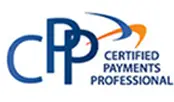As the second anniversary of EMV’s official debut in the U.S. approaches in October, it’s a good time to review what’s happened over the past two years.
The U.S. Payments Forum estimates that as of late March, banks (as well as American Express and Discover) had issued some 600 million chip cards. MasterCard and Visa estimate that almost 2 million U.S. point-of-sale terminals can accept chip card payments.
But here’s the downside: Javelin Research & Strategy estimates that approximately 15 million POS terminals still need to be upgraded to accept chip cards. That’s a staggering number almost two years after the EMV liability shift date in the U.S.
However, there is a silver lining for businesses — particularly restaurants — that have yet to upgrade. Pay-at-the-table devices, which generally accept both EMV and contactless payments, could catch on with restaurants in a big way during the next couple of years.
Cayan is one of several companies in the market that peddle mPOS devices capable of the type of pay-at-the-table experience that is common at restaurants outside the U.S.
Last month, the Boston-based company introduced a smaller version of its Genius of point-of-sale device called the Genius Mini. Cayan said in a press release that the Genius Mini supports the growing trend of retailers and restaurants embracing mobile tablet POS systems.
But restaurants historically are slow to embrace new technology. Will the combination of the EMV transition and vendors offering pay-at-the-table devices help usher in a new customer experience at restaurants?
“Right now, I don’t think the restaurants have been given a tech solution that really fits in with how they really interact with the customers,” Chad Lowman, director of product management at Cayan, told Mobile Payments Today in an interview last month at the National Restaurant Association show in Chicago. “It has to evolve off the current experience, so drastically changing that will be disruptive.”
One aspect of the dining experience that will need to be addressed with pay-at-the-table will be the act of leaving a tip.
“That’s what we’ve been hearing a lot about, the awkward interaction when it comes to the tip,” Lowman said.
Russell Boone, who is a senior partnership manager for payments processor Vantiv, also mentioned the tipping dilemma in an interview with Mobile Payments Today at the NRA show.
“There’s kind of a stigma around [pay-at-the-table] in that you’re thinking the server is going to be like the bellhop and wait for a tip,” he said. “But now you can place that device on the table and walk away and the customer doesn’t feel that pressure to tip when a server is standing in front of them.”
Boone and Lowman agree that more U.S. restaurants will add pay-at-the table soon, but that mass adoption is still a couple of years away, at the very least.
“Realistically, I think we’re another two years away from everyone having it just because of the costs of the hardware and the change in functionality at the point of sale,” Boone said. “The technology has a little bit of a ways to go, but I think the next 12 to 18 months is where it’s going to be more ubiquitous.”




